PinotFile: 9.4 March 21, 2012
|
John Tyler Wines: Ageworthy Wines with PedigreeIt is hard to believe that just 50 years ago prunes took precedent over wine grapes in the Russian River Valley with prune, peach, cherry and apple trees assigned to prime growing sites and grapevines relegated to the poorest ground. Wine grapes were almost an afterthought since fruit trees were the money crop. The Italian forebearers who had settled the region had planted field blends of Zinfandel, Petite Sirah and Carignane, but there were also extensive plantings of French Colombard, Golden Chaslis and Mission, varieties that are extinct today in the region save for a few French Colombard vines. Locals had no interest in or knowledge of Pinot Noir and Chardonnay, the two varieties that now dominate the Russian River Valley landscape. John Bacigalupi tells the humorous story of the time his father called Foppiano Winery to inform them that his crop of Pinot Noir and Chardonnay was ripe and ready to pick. The winery told him they could not be bothered, as the winery was not even operational for the harvest yet because they were too busy processing prunes! When the early plantings of Pinot Noir went into the ground on Westside Road by Charles and Helen Bacigalupi in 1964 and Joe Rochioli, Jr., in 1968, most thought it was folly to plant this grape that nobody wanted. Charles and Helen’s son, John, recalls that in the late 1960s and early 1970s growers could not sell Pinot Noir and had to bribe potential buyers with Chardonnay to get them to take Pinot Noir. The Pinot Noir was sent to a large crush facility such as Seghesio’s in Healdsburg where there were two rows of enormous cement tanks. All red grapes, including Pinot Noir, were processed and blended on one row and all white grapes mixed together on the other row. There was no attempt to separate the grapes by variety. The bulk red and white wines were then shipped for market to Gallo. Today I shutter to think that the prized Pinot Noir grapes from Bacigalupi and Rochioli went into Gallo’s Hearty Burgundy! Its no wonder that Hearty Burgundy was highly regarded by the wine press at the time. Charles Bacigalupi was born in Santa Rosa in 1924. His father ran the local Bacigalupi Market and made wine which he sold in gallon jugs at his store. Charles became a dentist, settling and practicing in Healdsburg after his schooling. His wife, Helen, trained as a pharmacist, an unlikely profession for women of the time. The Bacigalupis had always wanted a ranch in the country, and in 1956 they acquired the 121-acre Goddard Ranch on a bench on Westside Road above the Russian River, just south of Mill Creek Vineyards in Healdsburg. The ranch had been in the same family for five generations, but the elderly owners had no heirs and could not maintain the large property. The Goddard Ranch was planted to prunes, cherries and wine grapes including Zinfandel, Golden Chaslis, Mission and Muscat which had been dry farmed. When the Bacigalupis purchased the ranch, Charles was hopeful that the crops would cover the property taxes. At the time, Zinfandel was bringing $50 a ton, but the white grapes attracted only $25 a ton. The Bacigalupis had no farming experience but their scientific backgrounds served them well and both had a green thumb. Initially they sold their grapes to Seghesio in Healdsburg, but since the white grapes on the property brought little income, they decided to pull all of it out and replant. The Bacigalupis consulted with both Paul Heck, a patient of Charles’, who had acquired Korbel Champagne Cellars with Adolph L. Heck, Jr., in 1953, and Bob Sission, the University of California at Davis farm advisor for Sonoma County. Both advised them to plant Pinot Noir and Chardonnay, basing their recommendation on the heat summation studies of Albert Winkler and Maynard Amerine who were recommending that Russian River Valley winegrowers plant Pinot Noir and Chardonnay instead of the popular Zinfandel. John Bacigalupi recalls that his father had scarce knowledge of Pinot Noir and Chardonnay and had to write the names down. He only vaguely realized that the two varieties grew in France. Paul referred the Bacigalupis to his friend, Karl Wente, who supplied them with Wente selection budwood from his Livermore plantings. The Pinot Noir selection, thought to be Pommard, is rumored to have originated in Luxembourg. 6 acres of Chardonnay and 6 acres of Pinot Noir were planted on St. George rootstock in 1964 and field budded in 1965. The initial harvests were sent to Seghesio in Healdsburg for bulk wine production. Charles and Helen are pictured below at a Sonoma County Wine Library Oral History event in Healdsburg.
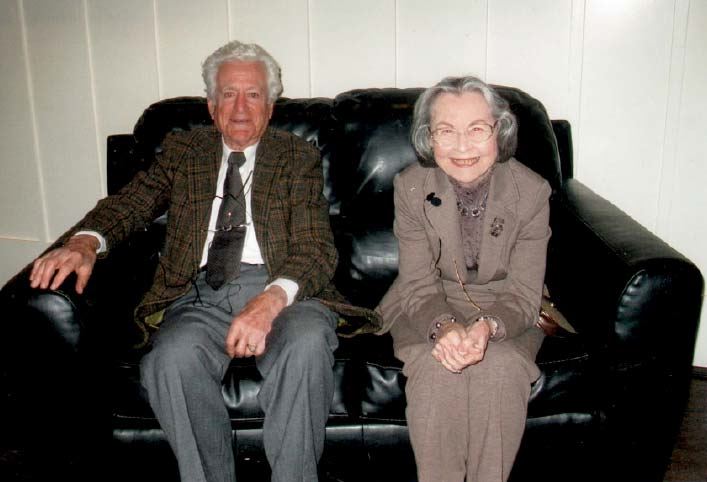 In 1973, Miljenko “Mike” Grgich, the winemaker at Chateau Montelena, came to the Bacigalupi’s house and asked to buy some Chardonnay. He made 1,800 cases of the 1973 Chateau Montelena Chardonnay using 20 tons of grapes from Henry Dick in Alexander Valley, 14 tons from the Bacigalupis, and the remaining 5 tons from Napa Valley growers John Hanna and Lee Paschich. The original weigh tag from 1973 is proudly displayed in the Bacigalupi’s tasting room:
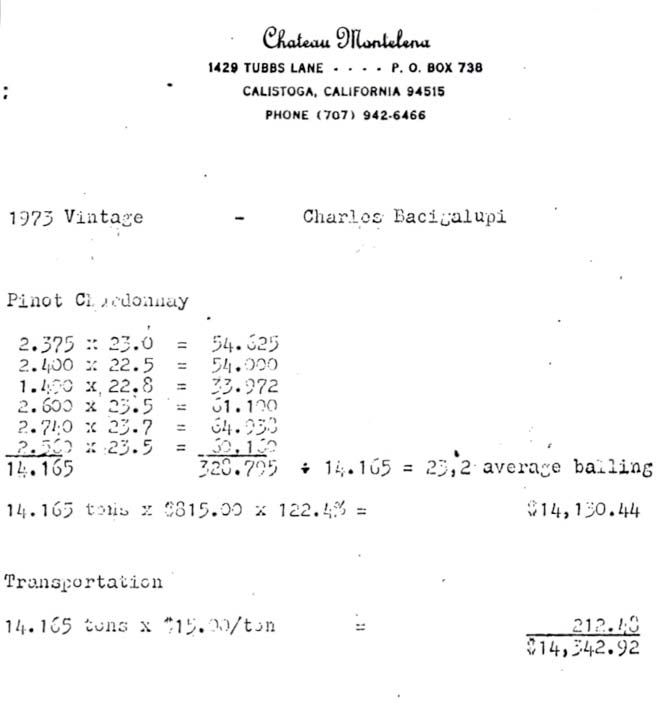 The wine won the famed Judgment of Paris tasting organized by British wine merchant Steven Spurrier in 1976. Four white Burgundies were pitted against six California Chardonnays. 9 French judges rated the wines on a scale of 20 possible points and the results were: 1973 Chateau Montelena, 132; 1973 Roulot Meursault Charmes, 126; 1974 Chalone Vineyard, 121; 1973 Spring Mountain Vineyard, 104; 1973 Joseph Drouhin Beaune Clos des Mouches, 101; 1972 Freemark Abbey Winery, 100; 1973 Ramonet-Prudhon Batard- Montrachet, 94; 1972 Domaine Leflaive Puligny-Montrachet Les Pucelles, 89; 1972 Veedercrest Vineyards, 88; 1973 David Bruce Winery, 63.
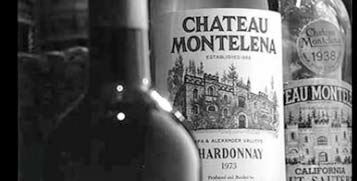 The 4-acre Paris Tasting Block of Chardonnay on the Bacigalupi ranch is still thriving. Currently the grapes are sold exclusively to Rudd Winery in Oakville. Grgich never bought any more Sonoma County grapes after the 1973 vintage, preferring to produce the Chateau Montelena wines from Napa Valley sources exclusively. Although the results of the Judgment of Paris were widely publicized, the vintners in Napa Valley downplayed the fact that the Chardonnay grapes came primarily from Sonoma County. Bacigalupi fruit did not receive significant recognition until several years later, although same have said the 1975 Chateau St. Jean Chardonnay from Bacigalupi fruit was the best one they ever made.
 According to Michael Lonsford (Houston Chronicle Archives, 1985) and the Bacigalupi family, Rod Strong and Peter Friedman founded Sonoma Vineyards in the early 1960s, but Friedman left in 1977 and in 1979 started the Belvedere Wine Company. The first two vintages were crushed at Windsor Vineyards, the former home of Sonoma Vineyards. The Belvedere Wine Company winery eventually was built on Westside Road where the VML Winery is currently situated. Friedman paid a premium for wine grapes, more than twice the going rate of $50 to $75 a ton, and produced a line of varietal wines featuring some of the most well known Northern California vineyards of the time. The wines were part of a “Grapemaker Series,” featuring vineyards such as Robert Young, York Creek, Winery Lake and Bacigalupi. The vineyard, not the winery, was featured on the labels, an innovative practice for California. The initial winemaker was Mary Ann Graf, the first woman to graduate from the University of California at Davis viticulture and enology department. Belvedere Wine Company was the first winery to highlight Chardonnay and Pinot Noir grapes from Bacigalupi vineyards. The 1982 Belvedere Bacigalupi Vineyard Pinot Noir won the Sonoma County Fair Sweepstakes and everyone clamored for this wine. The wine had been pre-sold, however, and few could acquire the wine. Many regard the 1985 Williams Selyem Rochioli Vineyard Pinot Noir as the seminal wine in the history of the Russian River Valley, but the 1982 Belvedere Bacigalupi Vineyard Pinot Noir preceded it in achieving widespread notoriety for the Russian River Valley.
 The Bacigalupi’s Goddard Ranch now consists of 50 acres of Old Wente Chardonnay, including the 4-acre Paris Tasting Block, and 15.4 acres of multiple clones of Pinot Noir (Old Wente, Pommard, 115, 667, 777 and 2A), none of which are the original 1964 plantings. A 4.5-acre block planted in 1968 is the oldest Pinot Noir on the ranch, a low-yielding planting sold to Williams Selyem for their Westside Road Neighbors bottling. Through the years, the Bacigalupis added other vineyard sites. The 40-acre property next door to the Goddard Ranch, the Bloom Ranch, was acquired in 1973 and has 6 acres of Chardonnay, planted between 1965 and 1982. The nearby 60-acre Frost Ranch was added in 1993. The French Colombard and Sauvignon Vert planted at the Frost Ranch had been sold to Gallo’s Windsor Co-op for 70 years, but were pulled out after the Bacigalupis acquired the property, but the Chardonnay was retained. The dry farmed old vine Zinfandel and Petite Sirah were eventually pulled out as well because of extremely low yields. The Frost Ranch is now planted to 21.88 acres of multiple clones of Pinot Noir (Dijon, Old Wente, Pommard, and 2A). A fourth vineyard, the Alexander Valley Ranch, bought in 1983, has 15 acres of Zinfandel and Petite Sirah. An aerial view of the three Russian River Valley Bacigalupi estate vineyards:
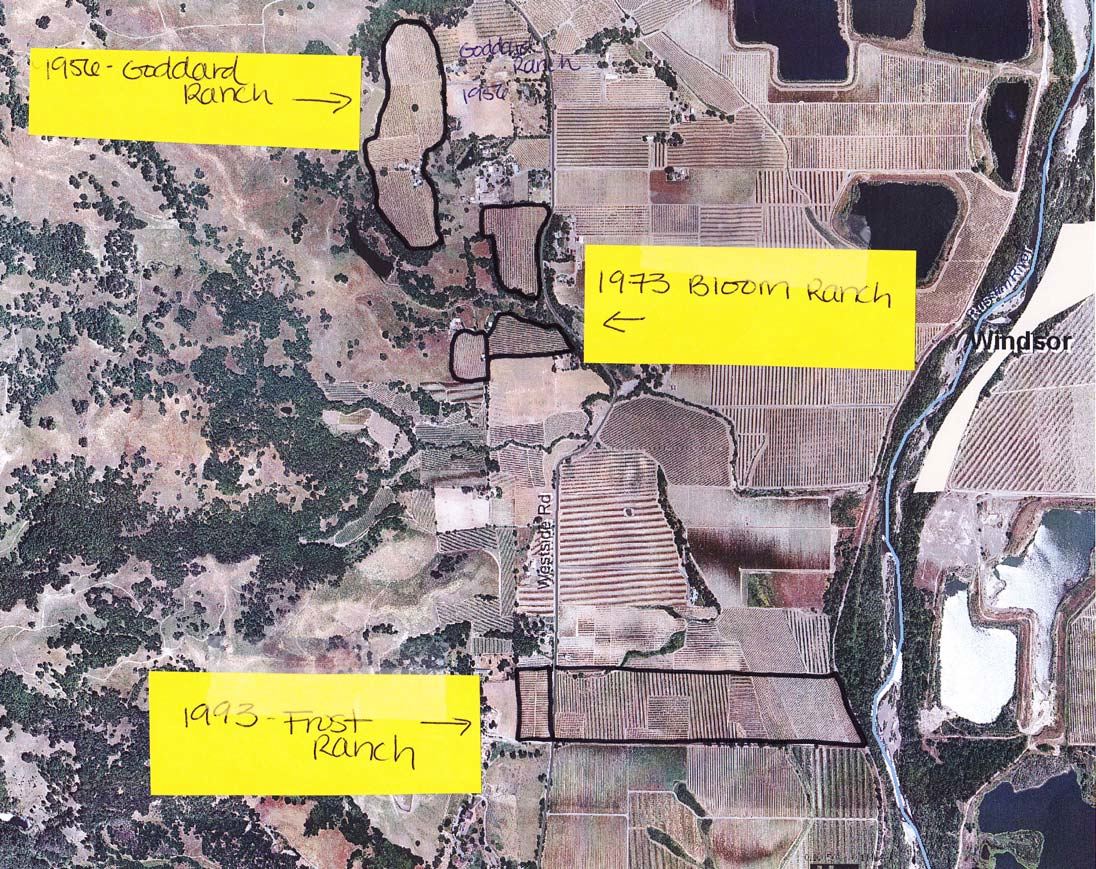 In all re-plantings of the estate vineyards, John has selectively chosen to take cuttings from existing Wente Pinot Noir and Chardonnay vines that are most healthy (least affected by leaf roll and other diseases) rather than purchase heat-treated vines. He observes that the leaf roll affected vines die off eventually, leaving behind the most staunch vines and the use of these vines for propagation improves the overall quality of the vineyard. Most of the Pinot Noir vines are on St. George rootstock which performs extremely well in the well-drained rocky soils of the area. He has been experimenting with other rootstocks such as Riparia which is sensitive to water stress. John speaks fondly of the Wente selection Pinot Noir, believing it offers very distinct flavors and special interest compared to the other clones he has planted. As you can see from my reviews below, I agree with him. Until 2002, the Bacigalupis sold all their grapes to numerous Napa Valley and Sonoma County wineries. They did have an investment in Chateau Souverain in the 1970s and supplied grapes for that venture which eventually failed. Today, Bacigalupi estate grapes are part of many winery’s bottlings and the Bacigalupi Vineyard is often designated. The wineries, most of which are small, include: Adobe Road, Arista Winery, Armida Winery, Chronicle Wines, City Winery, D’Argenzio Winery, Fantesca Estate & Winery, Fourth Estate, Gracianna Winery, Kesner Wines, L’Objet Noir, Macrae Family Winery, Matrix Winery, Moshin Vineyards & Winery, Rudd Winery, Tudal Family Winery, and Williams Selyem.
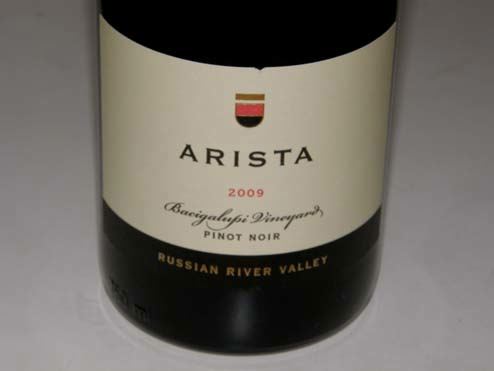 John’s spouse, Pam, is an emergency room nurse and a member of the Heck family that owned Korbel Champagne Cellars. She told me she crafted a Pinot Noir in high school as part of a chemistry project. Her nephew, Tyler Heck, the son of Pam’s late brother Patrick Heck, grew up around winemakers Mike Martini, David Heitz and others who were friends of his father, Paul Heck, soaking up considerable knowledge of winemaking. After attending California State University, Fresno and later graduating from Cal Poly, San Luis Obispo with an agricultural business degree and a minor in enology, he embarked on a winemaking career taking him to several California wineries including Louis Martini, Iron Horse, Fetzer, Foppiano, Souverain and Adler Fels. His aptitude for winemaking led him to become a problem solver for a number of these wineries. In 2001, John had some second crop Pinot Noir and asked Tyler to craft one new barrel of wine while he was still in school. It turned out well and the following year, Pezzi King had committed to 13 tons of Pinot Noir but backed out shortly before harvest. Tyler crushed the grapes at Taft Street Winery, and with those 800 cases, John Tyler Wines was launched in 2002. The name of the winery is a combination of winegrower John Bacigalupi’s first name and winemaker Tyler Heck’s first name. The John Tyler Pinot Noirs since 2002 are a combination of Pommard clone and Old Wente selection from Frost Ranch Vineyard with yields typically in the 2-3 tons per acre range (except in 2007 when a Pommard Clonal Selection and Wente Clone were bottled separately). John Tyler wines are not in step with the usual Westside Road Pinot Noir offered by many other Russian River Valley wineries. John choose a different approach, realizing that French wines were celebrated for their age worthiness in contrast with the common perception that California Pinot Noir would not age. He worked with Tyler to craft wines with the structure to age, not only Pinot Noir, but also Zinfandel and Petite Sirah. Extensive cold soaks followed by long, cool fermentations resulted in wines with the structural backbone to age. The wines typically have 5% to 10% whole cluster inclusion and in some vintages whole cluster batches are kept separate and added back. The oak regimen consists of one-third new, one-third once-filled white, and one-third twice-filled white French oak barrels (including Francois Frères, Berthomieu, Darguad & Jaegle, and Taransaud). Barrel aging lasts 11 months. The wines are held back in bottle for at least 12 months before release. The result is Pinot Noir that is unlike any other from the numerous prestigious wineries on Westside Road which tend to favor the fruit-forward, early consumption style of California Pinot Noir. One is tempted to speak of a “Burgundian” style since the wines are nuanced with more to say than fruit, and have well-structured tannins that need time to integrate and soften but are nicely balanced for age ability. The wines show a savory side with earthy, leafy, herbal notes in the background and never make you think of oak. John found that restaurants were resistant to the idea of offering older vintages, and efforts at distribution were met with limited success. He therefore decided to build a tasting room on the Goddard Ranch property which opened in June, 2011. The wines turned out to be popular to those who tasted them at the tasting venue. It became a matter of educating palates, exposing them to well-aged wines which they had seldom experienced. The winery currently is pouring the 2005 and 2007 Pinot Noirs and is offering a seven wine vertical of John Tyler Bacigalupi Vineyard Pinot Noir 2002-2007 (including both the Clonal - Pommard and Wente bottlings from 2007) for $350. The vertical is available through the tasting room (707-473-0115). Current production of Pinot Noir, Chardonnay (170 cases), Zinfandel and Petite Sirah is about 1400 cases.
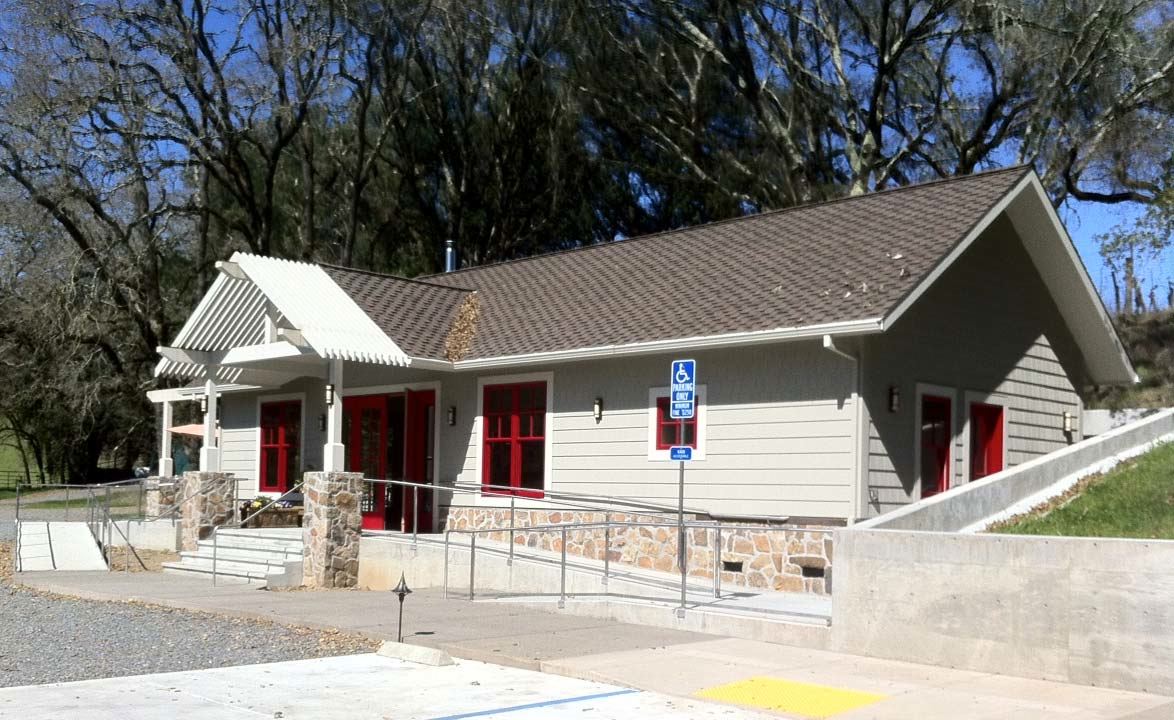 With the launch of the John Tyler Wines label and opening of the John Tyler Wines tasting room, John and Pam’s fraternal daughters, Katey and Nicole, have become the new face of the family winery and share the management of the winery’s business, staff the tasting room, and direct sales and marketing. Katey has a degree in agricultural business with an emphasis on wine and viticulture from Cal Poly, San Luis Obispo. Nicole graduating from San Diego State with a business degree emphasizing marketing and holds a sommelier certificate. The girls offer a younger, Millenial vibe to wine enjoyment, and are extremely warm, knowledgeable and eager to please visitors to the country cottage style tasting room which is set among mature trees on the Goddard Ranch. The tasting room, which offers both indoor and outdoor venues for tasting, is open from 10:30 A.M. to 5:00 P.M. daily at 4353 Westside Road, Healdsburg. The Bacigalupi family is recently pictured in their tasting room:
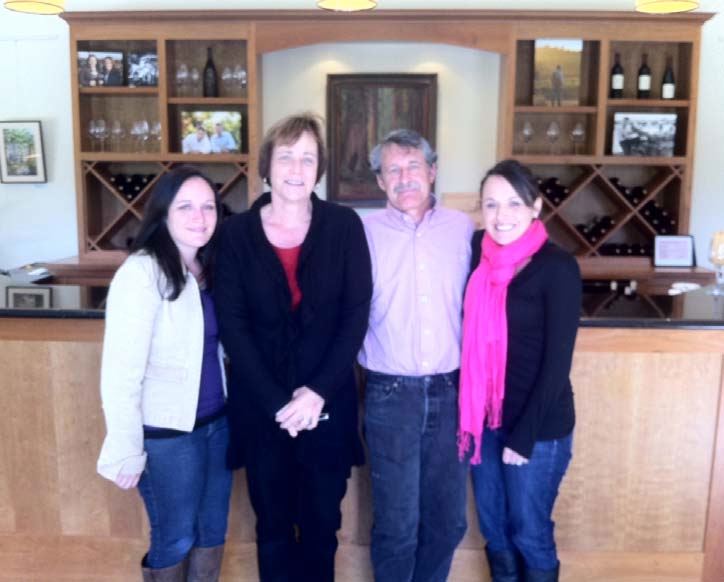
Listen to my conversation with John Bacigalupi on March 7, 2012: "John Bacigalupi of John Tyler"
2002 John Tyler Bacigalupi Vineyard Russian River Valley Pinot Noir 14.2% alc., 826 cases, $58. · Moderately light reddish-purple color with slight bricking of the rim in the glass. Still fresh on the nose with a complex array of aromas including red fruits, spice, loam, old cask, and rose petal. Tasty core of dark cherry and raspberry fruit with secondary characters of fruit leather, tobacco and tea leaves. Still plenty of pleasing fruit on board with mild tannins and an appealing softness in the mouth. A charming wine with a lovely patina that has probably peaked, but will last another five years. Very good.
 2003 John Tyler Bacigalupi Vineyard Russian River Valley Pinot Noir 14.4% alc., 829 cases, $52. · Moderately light reddish-purple color in the glass with slight bricking of the rim. Fresh aromas of raspberries, rose hips tea, fennel seed and even ripe melon. Medium-weight flavors of dark raspberries and cherries with undertones of cola, Chinese 5-spice and dark chocolate. Amazing mouth filling presence with mild fine-grain tannin and remarkable length on the finish. This wine is perfect now, but should have several years of life ahead.
2004 John Tyler Bacigalupi Vineyard Russian River Valley Pinot Noir 14.5% alc., 558 cases, $52. · Moderate dark red rose color in the glass. Very bright and appealing perfume of fresh crushed cherries, just picked berries with a complimentary hint of oak spice. Soft and silky on the palate with a well-spiced light to medium weight core of Bing cherries highlighted by savory herbs. The structural tannins are evident but not imposing and the bright acidity is uplifting. This wine is drinking beautifully now but balance predicts another ten years ahead. Still fine the following day from a previously opened and re-corked bottle. Very good (+).
2005 John Tyler Bacigalupi Vineyard Russian River Valley Pinot Noir 14.5% alc., 675 cases, $50. · Medium reddish-purple color in the glass. Subdued aromas of darker berries and underbrush. Delicious essence of black plum reduction sauce and blackberry jam with hints of anise, grass and oak. A relative bruiser with the fruit still tightly compressed in the potent tannins. Still a Lolita. Much better the following day from a previously opened and re-corked bottle. Needs several more years in the cellar or decant if you must drink now. Very good (-).
2007 John Tyler Bacigalupi Vineyard Clonal Selection Russian River Valley Pinot Noir 14.5% alc., 364 cases, $45. Pommard clone from Frost Ranch. · Medium dark orange-red color in the glass. Very fruity aromatics offering scents of fresh berry tart, black cherries and sandalwood. Moderately forceful and assertive with noticeable tannin, offering flavors of plum reduction sauce, ripe strawberries and black raspberries, grilled beef and spice. Fine now, but could use more time in bottle for optimum enjoyment. Very good.
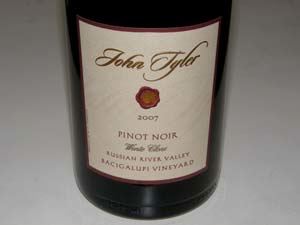 2007 John Tyler Bacigalupi Vineyard Wente Clone Russian River Valley Pinot Noir 14.4% alc., 418 cases, $45. 100% old Wente selection from Bacigalupi Vineyard at Goddard Ranch. · Moderately dark reddish-purple color in the glass. Lovely aromas of dark cherry and berry mash with a hint of rose petal. Vibrant fruit on the mid palate with intense flavors of black cherries, dark berries and cassis, carrying over on the richly endowed and persistent finish. This wine really attracts your attention, offering and retracting numerous fruit and savory flavors over time in the glass. Well structured with moderate tannins, without the power and concentration of the 2005 bottling, but offering more appealing charm and complexity. Will easily last another 10 years.
2008 John Tyler Bacigalupi Vineyard Russian River Valley Pinot Noir 14.0% alc., 590 cases, $45. Wente and Pommard clones. 3 tons fermented whole cluster, 11 tons crushed. 7-day cold soak, inoculated for malolactic. · Moderate dark red rose color in the glass. Invigorating aromas of perfectly ripe red cherries and red berries, nicely spiced, and complimented by a hint of oak. Very approachable now with a middleweight core of Bing cherry, baking spice, cola and sandalwood flavors. A hint of savory herbs adds interest. Soft in the mouth with moderate tannins and refreshing acidity. This wine is the most fruit-forward of the vintages at this early stage. Very good (+).
2009 Arista Bacigalupi Vineyard Russian River Valley Pinot Noir 14.3% alc., pH 3.82, TA 0.52, 106 cases, $58. Combination of old Wente Selection and Pommard clone. · Moderately light reddish-purple color in the glass. Appealing aromas of dark red pie cherries, fennel and Italian seasoning. Very savory on the palate with a medium weight core of ripe Bing cherries, cola and Chinese 5-spice flavors wrapped in soft tannins. Picks up interest and intensity over time in the glass. The velvety texture is very seductive. Very good.
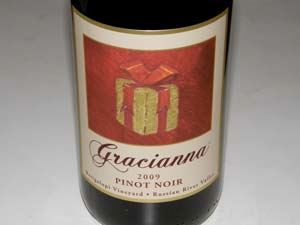 2009 Gracianna Bacigalupi Vineyard Russian River Valley Pinot Noir 14.5% alc., 290 cases, $48. Aged in French oak barrels for 11 months. Vinified by Trini Amador. Unfined and unfiltered. · Medium reddish-purple color in the glass. Very attractive aromatic profile featuring scents of dark red cherries and berries, herbs, grass, tea leaf and the slightest hint of barnyard. Ephemeral in the mouth with tasty herb-imbued flavors of dark red pie cherries with a sidecar of complimentary oak. Soft and smooth on the palate with a good spark of acidity adding vivaciousness, and ending with a very memorable and long, cherry-driven finish. Very good (+).
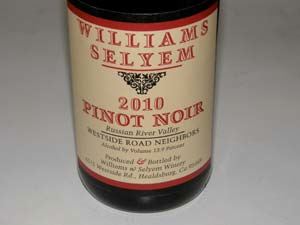 2010 Williams Selyem Westside Road Neighbors Russian River Valley Pinot Noir 13.9% alc., $69. · Medium reddish-purple color in the glass. Slow to open, becoming more complex over time, offering aromas of black cherry liquor, spice, new leather, and cedar. Moderately rich essence of fresh Bing cherries with hints of cola, oak and spice. Beautifully crafted and very polished with a well-proportioned tannic backbone and an appealing finish of some length and good cut. Will benefit from another year in bottle. A special occasion wine.
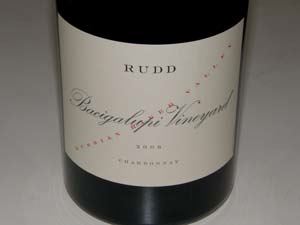 2008 Rudd Bacigalupi Vineyard Russian River Valley Chardonnay 14.6% alc., $75. This Oakville Estate winery is the only winery to produce a wine from the original 65-year-old Paris Tasting Block at Bacigalupi Vineyard. It is the only Rudd wine made from purchased fruit. This release is the ninth vintage. Each year the fruit production of this vineyard decreases due to the age of the vines. Barrel-fermented with 100% MLF. · Light straw color with mild haze (unfiltered). Invigorating aromas of lemon curd, baked pear, oak, and a hint of butter and grapefruit. Delicious flavors of white peach, pear, and complimentary toasty oak with an undertone of minerality and a riff of lemon on the lengthy finish. The creamy texture adds appeal. A spectacular offering made from vines of great historical significance that will please any Chardonnay connoisseur.
12th Annual World of Pinot Noir
 Each year on the first weekend in March a few thousand pinot geeks converge on the small beach side community of Shell Beach at The Cliffs Resort to revel in the wines made from their favorite grape. This year’s event was exceptional thanks to the efforts of Karen Steinwachs, the 2012 Chairperson, and the dedicated work by the World of Pinot Noir Board of Directors and Advisory Committee. It was a weekend to renew old friendships and make new friends, to discover new Pinot Noir producers as well as revisit established Pinot Noir vintners, and to taste the current bounty of Pinot Noir from North America, New Zealand, Australia, Chile, and Burgundy. Two seminars were offered on Friday, March 2, hosted by winemaker Fintan Du Fresne and the crew at Chamisal Vineyards in Edna Valley. The first seminar, titled “Technique v. Terroir: The Cube Project,” was moderated by yours truly, and the second seminar, “Natural Winemaking,” was moderated by noted Pinot Noir expert, John Haeger. I will summarize the discussion and conclusions reached at each seminar.
Technique v. Terroir: The Cube ProjectThree winemakers, Thomas Houseman of Anne Amie Vineyards in Carlton, Oregon, Andrew Brooks of Bouchaine Vineyards in Napa Carneros, California, and Leslie Mead Renaud of Lincourt Vineyards in Santa Barbara County, California, met at the Steamboat Conference for winemakers held in Oregon each year before the International Pinot Noir Celebration. They decided to devise an experiment in terroir that involved the three winemakers and their three vineyards, with 9 wines resulting from three vintages (thus the “Cube” designation). The three wineries picked 6 tons from a block of Pommard clone Pinot Noir, dividing it into thirds, with each winemaker fermenting 2 tons of fruit. Each winemaker was responsible for picking decisions at their own winery and the grapes were picked on the same day. In this way, each of the three wines made from that particular lot started on equal footing. Each individual winemaker crafted the wine from the two other vineyards in the same fashion as the wine from their own vineyard. The regimen would be repeated for three vintages, 2010, 2011 and 2012. The details
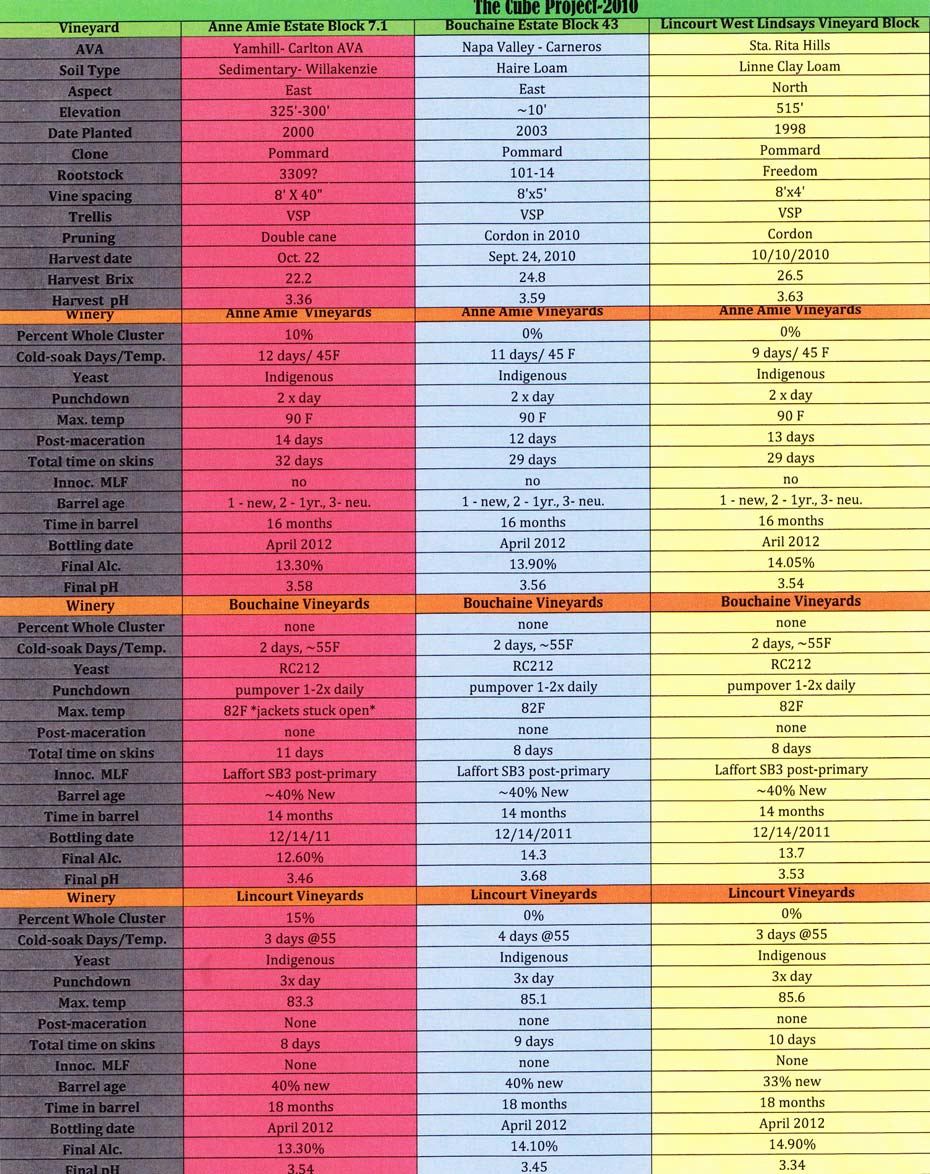 The Cube Project is about community, terroir and creative expression of the winemaker. It is a unique opportunity for each winemaker to see their home vineyard through another winemaker’s eyes. It also offers the opportunity to compare wines from the same terroir made by different winemakers to see if the stamp of terroir shows through, and to compare three wines from different sources made by the same winemaker to see if the winemaker’s signature is evident in the wines. The experiment also offered the opportunity to study the different stylistic imprint of the Pommard clone from three diverse regions. The winemakers had tasted the wines when very young (July 2011) in a blind and randomized fashion. The consensus was that the stamp of the winemakers and the vineyards was very clear. The overwhelming consensus of the seminar attendees (over 100 people) was that at this stage in the wines’ evolution, the signature of the winemaker was much more evident than the terroir. One would expect that winemakers would be more adept at making the distinction between winemaking and terroir, but there were a number of winemakers in the audience as well.
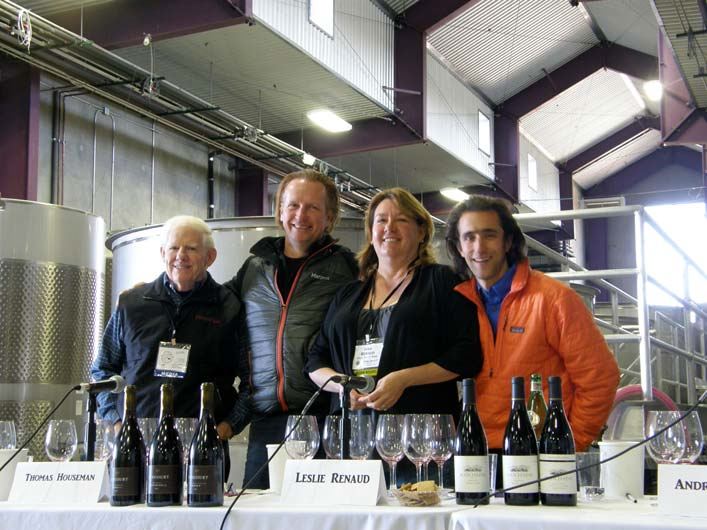 It has been a frequent refrain among wine critics that many of the Pinot Noirs crafted today reflect the interest of the winemaker more than the uniqueness of the vineyard. In this regard, the question was posed to the winemakers at the seminar whether it is more important for a wine to reflect its place of origin or taste good. It is a common conundrum for winemakers and this question resulted in quite a bit of discussion. It seemed that the winemaker panel felt that taste takes precedence over place of origin. The fact that many consumers in the seminar audience could not clearly distinguish terroir in the wines from a single source made by three different winemakers would seem to reinforce the overriding importance of the flavor of the wine over terroir, particularly from a commercial success viewpoint. As Charlie Oiken has pointed out (Connoisseur’s Guide to California Wine), “I hope that winemakers and wine lovers do not fall into the trap of blindly believing that those Pinots that identify a particular plot are inherently superior to those that do not. Place is important, but so is the winemaker’s craft.”
There are a number of definitions of the word terroir, a French term that has no equivalent in the English language. The term dates to 1300-1500 AD, originating in Burgundy where vignerons believed so strongly in the importance of soil and climate that they coined the word terroir. Today, Anthony Hanson MW (Burgundy) points out, “In Burgundy, they love the word terroir and have virtually turned it into a religion.”
The briefest one word definition: “soil.”
The French definition of terroir includes the winemaker and winegrower. Jamie Goode and Sam Harrop (Authentic Wine) concur: “The human element of terroir is important. Human input shapes the must and the wine in so many ways excluding it from the definition of terroir is ludicrous.” Others believe that terroir can only encompass natural occurring elements, the work of God so to speak.
The Cube Project wines will be available for sale. The 2010 vintage wines will be released in the Fall of 2012. Ordering details are below.
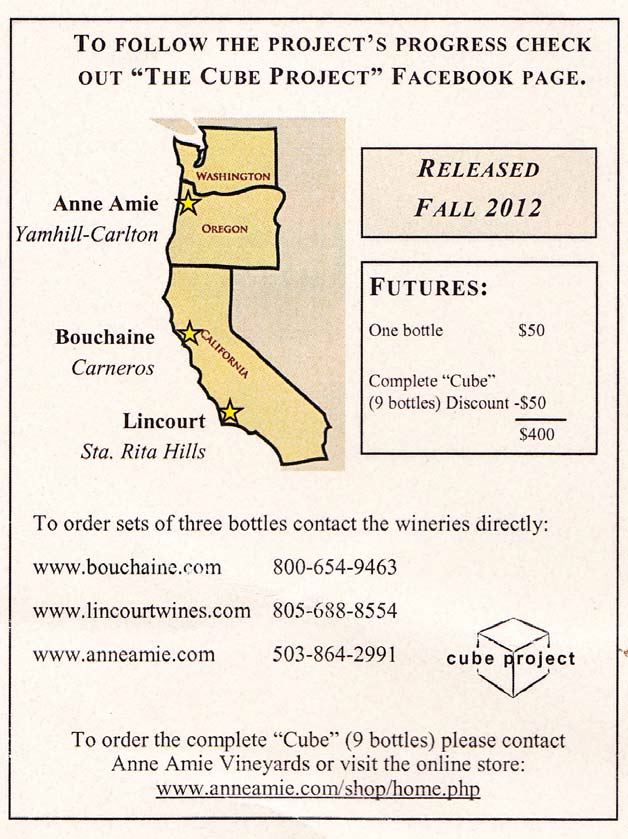
Natural WinemakingThe panelists for the Natural Winemaking seminar included both small winery winemakers who practice various degrees of “natural” winemaking (Bradley Brown, Big Basin Vineyards; Peter Cargasacchi, Cargasacchi Vineyards; Nathan Kandler, Thomas Fogarty Winery; and Joe Wright, Left Coast Cellars), larger wineries that do not pursue the extremes of “natural” winemaking due to economy of volume concerns (Scott Kelley, Estancia Estates Winery; Brian Maloney, DeLoach Vineyards), a well known author and proponent of “natural” wines (Alice Feiring, Naked Wine), and the founder of Vinovation (a provider of alcohol reduction tools, volatile acidity reduction, juice concentration, supplier of tannin adjunct, etc) and vintner at WineSmith, Clark Smith.
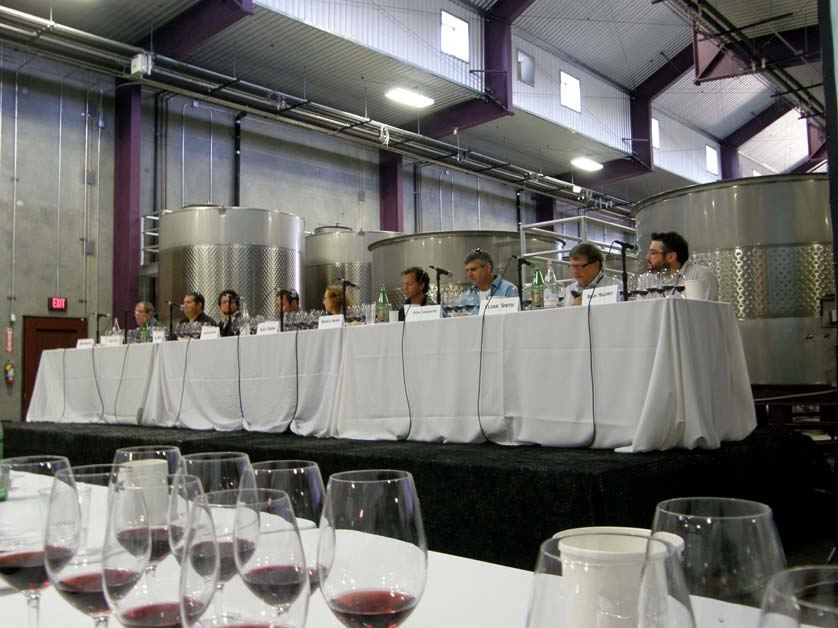 Moderator John Haeger opened the discussion by pointing out that there is no specific definition of “natural” winemaking or “natural” wines. Natural winemaking would seem to be what many winemakers claim they do, that is, “I am completely hands off, non interventional and let the wines make themselves,” but in reality do not. As winemaker Ted Lemon points out in the excellent book, Authentic Wine, “The term natural winemaking is an oxymoron. Consumable wine does not occur in nature. At Littorai we prefer the older description minimal intervention winemaking. The goal, however, is the same: to intervene in the fermentation and aging process as little as possible and always to favor simple physical inputs (temperature and humidity control, moving wine by gravity flow whenever possible) rather than chemical ones.” In general, natural winemaking involves natural winegrowing (no irrigation, organic pesticides and herbicides, if any, etc.), indigenous primary and secondary fermentations, the use of very little or no sulfur dioxide throughout the winemaking and bottling process, the absence of additions of any kind such as enzymes, and no fining or filtration. Proponents of natural winemaking believe that the wines that result are the purest expression of place. John Haeger surveyed a significant number of winemakers about their use of various winemaking techniques, comparing those who called themselves natural winemakers as opposed to those admitted interventional winemakers. His survey found that 60% of the winemakers claim to divulge everything about their winemaking technique (a high figure Haeger believes), and 40% are selective about what they admit regarding their winemaking technique. Questioning winemakers about their practice of inoculation in both primary fermentation and malolactic fermentation indicated there was a significant difference, with natural winemakers more frequently refraining from inoculating fermentations (arrows indicate significant difference).
 When surveyed about additions during winemaking, a significant number of natural winemakers never use enzymes compared to interventional winemakers.
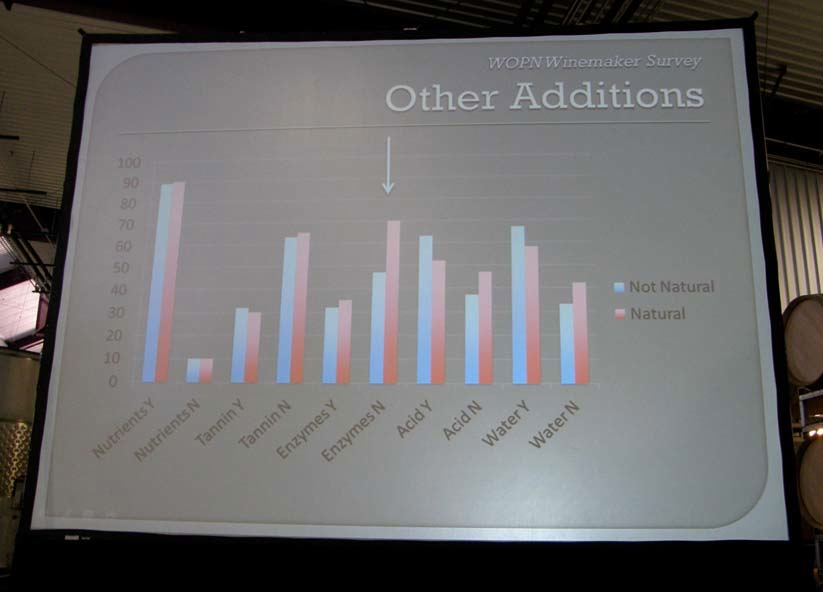 A significant difference was noted when winemakers were asked about fining with natural winemakers reporting that they rarely did it. There was no significant difference among winemakers of both types as to the use of filtration.
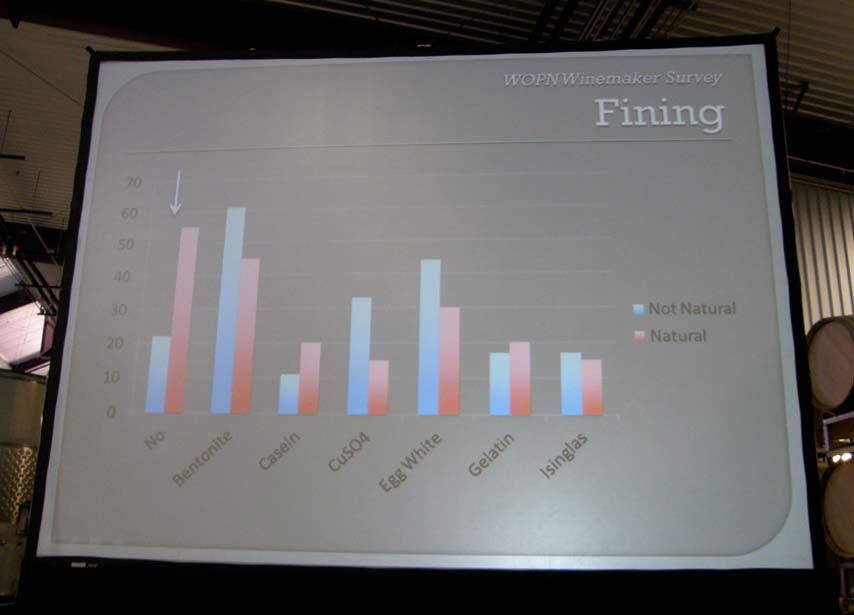 A significant difference was found in the use of sulfur dioxide at the crusher with natural winemakers most often using little or none. The wines presented for tasting:
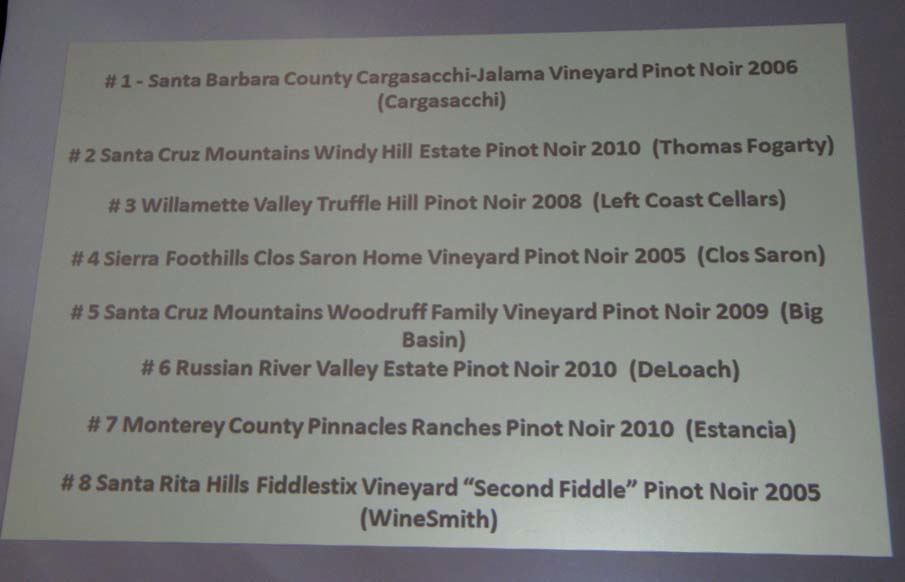 The #4 wine from Clos Saron is the most true to the “natural” winemaking paradigm and was the single problematic wine at the tasting. The Clos Saron Pinot Noir has no detectable sulfur dioxide at bottling. There was variation in the bottles of Clos Saron Pinot Noir poured at the event and this is the rub against natural wines. The sample I tasted and those samples poured from the same bottle and tasted by others in my vicinity, showed considerable funky aromas, with clear evidence of oxidation. The wine seemed way beyond its year of harvest in maturity. Sulfur dioxide, of course, acts as a antimicrobial and antioxidant and is usually added in small amounts at the time of bottling. Without this addition, there is a risk of a flawed and commercially unacceptable wine such as the bottle poured for this seminar. I have had a number of Clos Saron Pinot Noirs over the years and they have been generally pristine, but like the bottle poured at this seminar (and another I tasted at Pinot Days a few years back), they can be subject to microbial and oxidative irregularities. The #7 wine from Estancia Estates was made from machine-harvested grapes, using extensive interventional winemaking techniques to produce 250,000 cases, yet it was a very decent, fruity Pinot Noir. Winemaker Scott Kelley pointed out that the larger the production, the more economic risk involved, and the resultant necessity for the winemaker to intervene at multiple stages of the winemaking process to insure the large volume of wine is sound for commercial release. The #8 Pinot Noir was an experimental wine for Clark Smith, picked at a very low Brix. Smith presented a lengthy prepared sermon about this wine and the Natural Wine Movement. “I wanted to show that less hangtime than is customary could produce a deeper, truer expression of the hibiscus blossom and saddle leather which characterize Fiddlestix. Three weeks before harvest we used an ultrafiltration technique on Pinot Noir heavy press wine from a sparkling wine producer to create a Pinot Noir cofactor concentrate, neutral in flavor and without astringency, which was added during fermentation at 1%, resulting in an enhanced extraction of the cinnamic acid ‘spicy Burgundian flavors’ of clone 667 and of the cherry notes and color characteristic of clone 115 on this site, greatly enhancing the wine’s terroir expression while maintaining its silky, ethereal style. Despite its feminine delicacy, the wine’s structural integrity caused it to be quite closed in youth. I regard it as an artistic triumph and a commercial disaster.” (I agree, the wine was noticeably tannic with considerable grassy, herbal and floral aromas and flavors unappealing to my palate) His final comment was perplexing in light of the wine he presented which was clearly unbalanced. “My goals are soulful terroir expression, balanced presentation and graceful longevity. If the Natural Wine Movement is requesting wines which have made themselves, they have yet to demonstrate that they will support through purchase the clumsy, unbalanced wines that often result.” If you have any interest in the Natural Winemaking Movement, I highly recommend you read the very educational book, Authentic Wine, by Jamie Goode and Sam Harrop MW (University of California Press, 2011, hardcover, 259 pp, $29.95 list). With chapters on terroir, biodynamics and organics, chemical and physical winemaking intervention, and the Natural Wine Movement, the authors cover the complex subject of authentic wines in relevant detail with sound scientific explanations. There is considerable winemaking information as well that will serve any wine enthusiast well.
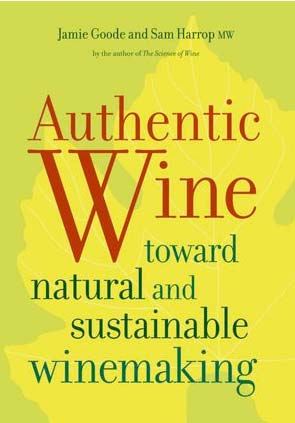 The two seminars were recorded in their entirety by Grape Radio (www.graperadio.com) and will be posted for listening at a future date.
12th Annual World of Pinot Noir: Wines that Caught My InterestWith 200 producers participating over the two-day Grand Tastings by the Sea, and each producer pouring multiple Pinot Noirs, it was an impossible task to sample even half the wines. I did get the opportunity to sample wines in quiet in the Media Room as well as in the noisy tasting tents (there were 750 tickets sold for Friday’s tasting and 850 tickets sold for Saturday’s tasting). My recommendations are based on quick impressions but represent an effort to identify those wines with the most pizzazz. A number of the wines from the 2010 vintage have not been released. 2008 Bien Nacido Vineyards Solomon Hills Vineyard Santa Maria Valley Pinot Noir 14.5% alc., 150 cases, $57. Bien Nacido Vineyards produces two Pinot Noirs in each vintage, one from Bien Nacido Vineyards and one from Solomon Hills Vineyards. Trey Fletcher, who trained at Littorai, was appointed winemaker in 2011. Visit www.biennacidovineyards.com.

2010 Bruliam Wines Deer Meadows Vineyard Anderson Valley Pinot Noir 13.7% alc., $46.
 2009 Cutruzzola Vineyards Gloria San Luis Obispo Pinot Noir 14.0% alc., $36. Located in a coastal valley just outside the town of Cambria on California’s Central Coast, this producer is a new find for me. 5 acres are planted to Pinot Noir. Proprietor is Francis Cutruzzola and the winemaker is Stephen Dooley of Stephen Ross Wine Cellars. A lighter style of Pinot Noir but packed with flavors of dark red berries and baking spice with gossamer tannins. Visit www.cutruzzolavineyards.com.
 2008 Edna Valley Vineyard Paragon Reserve Edna Valley San Luis Obispo Pinot Noir Medium weight flavors of darker stone and berry fruit with reserved tannins and a velvety mouth feel. A delicious wine with impeccable balance. Visit www.ednavalleyvineyards.com.

2008 Et Fille Nicholas Vineyard Chehalem Mountains Oregon Pinot Noir 13.7% alc., 172 cases, $34.
 2010 Failla Wines Keefer Ranch Vineyard Green Valley of Russian River Valley Pinot Noir 13.9% alc. 700 cases. From winemaker Ehren Jordan. Very attractive aromas of red fruit, spice and BBQ with a juicy core of fresh red cherry and berry flavors. Still sporting some oak notes which will integrate over time. Visit www.faillawines.com.
 2010 Felton Road Bannockburn Central Otago New Zealand Pinot Noir 14.0% alc., $40. A biodynamic estate producing Pinot Noir, Chardonnay and Riesling. The Pinot Noirs (there are five releases in 2010) are among the most complex produced in New Zealand. The 2010 Block 3 was previously reviewed by me with high accolades. Visit www.feltonroad.com. 2009 Gundlach Bundschu Winery Heritage Selection Estate Vineyard Sonoma Coast Pinot Noir 14.1% alc.. A limited bottling available only to wine club members. 30-year-old vines. A serious connoisseur's wine that is built for aging. Complex with impeccable balance. Watch a hilarious video, “A Brief History of Merlot,” at www.gunbun.com/merlot.

2010 Gypsy Canyon Winery Estate “Trois” Sta. Rita Hills Pinot Noir $90. Debuted at the WOPN. Like the
“Trois” from 2008 and 2009, this is an elegant wine with beautiful spice and sandalwood notes.
2009 Hartford Court Fog Dance Vineyards Green Valley of Russian River Valley Pinot Noir $60. From an
organically farmed estate vineyard planted in 1996 to primarily Dijon clones 667 and 777. Very exotic, citrusdriven,
and savory, with a substantial core of earth-kissed black cherries.
2010 Heart & Hands Wine Company Polarity Finger Lakes New York White Pinot Noir Owner and
winemaker Tom Higgins wanted a white wine besides Riesling to compliment his Pinot Noirs so he produced
this very unique white version of Pinot Noir. Visit www.heartandhandswine.com.
 2009 J Vineyards & Winery Russian River Valley Pinot Noir 14.4% alc., $35. A solid, well-priced appellation wine with a very expressive nose, offering well-spiced dark cherry flavor and some length on the finish. Visit www.jwine.com. 2009 Keefer Ranch Keefer Ranch Vineyard Green Valley of Russian River Valley Pinot Noir 14.2% alc., 220 cases, $42. Winemaker Craig Stehlow makes one Pinot Noir from Mary Keefer’s vineyard and it is of high quality in every vintage. This vintage is sold out so get on the mailing list for future offerings. Grapes are sold to several other notable California producers and their wines from this special vineyard shine as well. Visit www.keeferranch.com.
 2009 Ken Brown Wines Sta. Rita Hills Pinot Noir 14.6% alc., 409 cases, $38. Ken Brown has been crafting Santa Barbara County wine since 1977. His 2009 releases sport a new, improved label. 50% Clos Pepe Vineyard, 40% Rio Vista Vineyard, and 10% Rancho La Vina Vineyard. An exceptional appellation bottling which veers to the ripe side but never crosses over the line. Very smooth on the palate and ready to drink now, this wine will appeal to lovers of the robust, luscious style of Pinot Noir that Ken Brown is known for. Magnums available. Visit www.kenbrownwines.com.

2009 La Rochelle Winery Donum Estate Vineyard Carneros Pinot Noir Prerelease tasting at WOPN. The
first bottling I have seen from a winery sourcing Donum Estate grapes. Spectacular!
 2010 Luminesce Presqu’ile Vineyard Santa Maria Valley Pinot Noir 13.4% alc.. From a young vineyard planted in 2008 and 2009. Clone 777. First harvest for Luminesce from this vineyard. Luminesce is a new find for me. Owner and winemaker is Kevin Law. They have been producing wines since 2006 with an emphasis on Arroyo Grande and Santa Maria Valley vineyards. Very little new oak is used in the wines which are bottled unfined and unfiltered. The Pinot Noirs are typically aged for 11.5 months in barrel and then aged in bottle 12 months before release. This wine was one of the top Pinot Noirs I tasted at the WOPN. Everything is in place with fragrant aromas of fresh berry mash and a full-flavored core of juicy fruit unencumbered by oak. The balance in this wine really impressed me. Visit www.luminescewine.com.

2009 Melville Winery Estate Sta. Rita Hills Pinot Noir $32. A collection of 16 Pinot Noir clones. 33% whole
cluster, aged in neutral oak. Well-structured with an appealing aromatic profile of dark cherries and berries with
a citrus and floral underpinning. Chad Melville told me that the winery chose to discontinue the use of new oak
in their barrel aging program for Pinot Noir beginning in 2008.
2009 Pacific Ridge Vineyards “Lavender” Sta. Rita Hills Pinot Noir 14.5% alc., 77 cases. $42. Pommard
clone from La Encantada Vineyard. De-stemmed, aged 20 months in French oak barrels. This wine was flatout
great and one of the best I sampled at the WOPN. Bright dark berry driven aromas with a delicious core of
luscious dark stone fruits and berries. Very soft in the mouth and easy to drink with impeccable balance.
 2010 Paul Lato Wines “Lancelot” Pisoni Vineyard Santa Lucia Highlands Pinot Noir $85. Paul offered his 2010 vintage lineup this past week to mailing list customers. This wine is still relatively closed after recent bottling, but the potential is obvious. Paul Lato has built his business slowly and carefully, and his wines are in great demand (the offering of 2010 Pinot Noirs and Chardonnays recently sold out in one week). I believe the mailing list is full, but you can obtain the wines in the secondary retail market. Visit www.paullatowines.com. I will taste the 2010 vintage wines in May at the winery and give a full report. 2010 Pisoni Vineyards & Winery Lucia Garys’ Vineyard Santa Lucia Highlands Pinot Noir 14.4% alc., $50. Lucia is the sister label of Pisoni launched in 2000 by winemaker Jeff Pisoni and vineyardist Mark Pisoni. A spectacular offering that is highly aromatic and filled with delicious dark red and black berry flavor. Seductively smooth on the palate with soft tannins and surprisingly forward drink ability. You should have this wine in your cellar. Magnums available. Visit www.luciavineyards.com.
 2010 R2 (R Squared) Wine Co. Black Pine California Pinot Noir 14.4% alc., $26. A blend of Pinot Noir sourced from several vineyards in California including Carneros, Russian River Valley, Sonoma Coast, Anderson Valley and Sta. Rita Hills. A new project from the previous owners of Roessler Cellars. The winemaker is the talented Byron Kosuge. A very good value. Visit www.r2winecompany.com.
2009 RN Estate Kruse Vineyard Paso Robles Pinot Noir $48. Clones 115, 667, 2A and Pommard. Aged 13
months in 45% new French oak barrels. Continuing the tradition of elegant food friendly RN Estate wines, this
Pinot Noir has impressive finesse to compliment the full-flavored core of dark red fruits. Strikingly flavorful.
 2009 Seagrape Wine Company “Jump Up” Sta. Rita Hills Pinot Noir75 cases, $32. From Karen Steinwachs, the winemaker at Buttonwood Farm Winery in the Santa Ynez Valley. A blend of Hibbits Ranch Vineyard and Huber Vineyard. A bit exotic. Visit www.seagrapewineco.com. 2009 Sokol Blosser Winery Dundee Hills Willamette Valley Pinot Noir 14.0% alc., $38. Sokol Blosser farms 85 certified organic acres and is one of the pioneering wineries of the region. Moderately rich, showing bright, spiced dark red berry fruits on the nose and palate, wrapped in well-proportioned tannins. Fresh and uplifting. Available in magnums ($76). Visit www.sokolblosser.com.
 2010 Zotovich Estate Sta. Rita Hills Pinot Noir Prerelease sampling, bottled only two weeks before WOPN. Surprisingly fresh, open and appealing this soon after bottling. Ryan Zotovich, a former cellar master at Sea Smoke, is crafting some exciting Pinot Noir from this vineyard. Zotovich Cellars is a family affair focusing on Pinot Noir, Chardonnay, Syrah and Viognier. Visit www.zotovichcellars.com.
Affairs of the Vine Pinot SummitThe 10th Annual Affairs of the Vine Pinot Summit was held in San Francisco February 25, 2012. 460 Pinot Noirs, including Blanc de Noir and Brut Rosé sparklers, were entered in the competition judged by a diverse panel of wine professionals. At the Summit, the wines deemed best by the judging panel are offered to the public for blind tasting and the results of the consumer preferences are compared to the judges’ preferences. The following wines were poured at the Summit. Value-priced wines ($30 or less) are indicated by an asterisk. 2008 Alysian Allen-Rochioli Blocks Rochioli Vineyard Russian River Valley Pinot Noir 159 cases, $65. Clearly the class of all the entries and the highest scoring Pinot Noir.
 *2010 Angeline Reserve Sonoma County-Mendocino County-Santa Barbara County Pinot Noir 45,000 cases, $16. *2009 Barbed Oak Vineyard Zara’s Block Barbed Oak Vineyard Bennett Valley Pinot Noir 246 cases, $29. *NV Barefoot Cellars California Pinot Noir 700,000 cases, $6.99. I have had this wine and it is surprisingly good at this price. From the E.&J. Gallo family of wines. 2009 Davis Family Vineyards Soul Patch Russian River Valley Pinot Noir 525 cases, $42. 2009 Davis Family Vineyards Starr Ridge Vineyard Russian River Valley Pinot Noir 225 cases, $42.
 2009 Dunstan Wines Durell Vineyard Sonoma County Pinot Noir 229 cases, $50. 2008 Elkhorn Peak Estate Vineyard Napa Valley Pinot Noir 300 cases, $34. 2008 En Garde Reserve Russian River Valley Pinot Noir 80 cases, $48. *2008 Gloria Ferrer Cara Carneros Pinot Noir 14,433 cases, $22. *2009 Grey Stack Cellars Bennett Valley Pinot Noir 175 cases, $30.
 *2010 Harlow Ridge Lodi Pinot Noir 12,500 cases, $10.99. 2008 Kenneth Volk Enz Vineyard Lime Kiln Valley Pinot Noir 159 cases, $60. *2007 Laurier Los Carneros Pinot Noir 1,500 cases, $19.99. 2009 Lazy Creek Vineyards Estate Anderson Valley Pinot Noir 800 cases, $42. *2009 Leucadia Red Russian River Valley Pinot Noir 700 cases, $18. 2006 Orentano Russian River Valley Pinot Noir 1,500 cases, $36. 2009 Orsi Papale Rusian River Valley Pinot Noir 250 cases, $35. *2007 PerBacco Cellars Laetitia Vineyard Arroyo Grande Pinot Noir 470 cases, $30. 2009 Petite Abeille PA Vineyard Russian River Valley Pinot Noir 235 cases, $50. 2009 RN Estate Kruse Vineyard Paso Robles Pinot Noir 125 cases, $48. 2008 Solomon Hills Solomon Hills Vineyard Santa Maria Valley Pinot Noir 150 cases, $57. *2010 Spy Valley Marlborough Waihopai Valley New Zealand Pinot Noir 13,000 cases, $26.99. 2008 Stephen’s Estate York Mountain Pinot Noir 150 cases, $38. *2009 Tondre Tondre Grapefield Santa Lucia Highlands Pinot Noir 650 cases, $30.
 2008 TR Elliott Three Plumes Hallberg Vineyard Russian River Valley Pinot Noir 139 cases, $42.
Pinot BriefsSanta Barbara County Vintner’s Association Vintner’s Festival The 2012 Festival will be held April 21 at The “Carranza” in Los Olivos. More than 100 Santa Barbara County wineries will be pouring all varietals along with local foods. Tickets are $75 at www.sbcountywines.com. The weekend is also highlighted by winemaker’s dinners, library tastings and barrel tastings. A Vintner’s Visa gives wine enthusiasts a passport to twelve winery tastings.
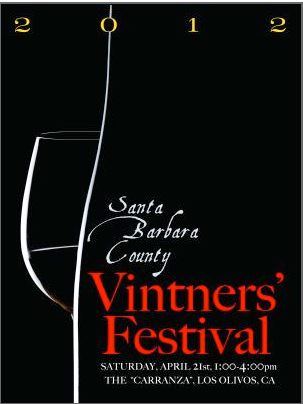 Sta. Rita Hills Winegrowers Alliance Tasting A focused tasting of the Sta. Rita Hills AVA is available to the trade (12-3) and public (4:30-7:30) at RN74 in San Francisco on April 2, 2012. 20 participating wineries. Tickets at www.staritahills.com. Shanghai Winexpo 2012 The 9th Shanghai International Wine & Spirits Exibition 2012 will be held on November 28-30 in Shanghai, China. The aim is to assist overseas wine and liquor producers and distributors to enter the Chinese market and for the foreign alcohol industry to establish their brand image in China. There will be 2800 wine wholesalers and 58,000 distributors in Shanghai. For information visit www.winefair.com.cn. Four Celebrated Pinot Noir Vintners in Hawaii The Four Seasons Resort Maui at Wailea hosts Webster Marquez of Anthill Farms, Donald Patz of Patz & Hall, Steve Clifton of Brewer-Clifton and Gary Burk of Costa de Oro for wine dinners, tastings, seminars and a charity golf tournament. The Saturday golf tournament will honor the Kimberly Project, a vineyard planted in honor of vintner Greg Brewer’s cousin, who lost her life at a young age. All proceeds from the vineyard’s production each year, and from tournaments like this one, benefit the North County Rape Crisis and Child Protection Center of Santa Barbara County. The three-day event will be held June 7-9, 2012, culminating in a gala oceanfront wine dinner created by the resort’s Master Executive Chef Roger Stettler featuring 32 selected Pinot Noirs and 8 Chardonnays paired with local Maui produce and seafood. For information visit www.maui.enewsletters.fourseasons.com/unforgettableevents/ or call 808-874-2201.
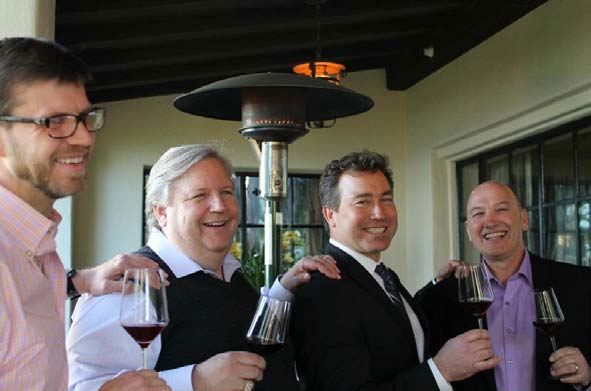 Pinot Noir NZ 2013 With the opening of registrations for the event, Chairman of the Board, Alastair Maling MW, announced that Sam Neill, winemaker, movie actor and raconteur will open Pinot Noir NZ 2012 in Wellington, January 28-31, 2013. The first Pinot Noir NZ was held in 2001 and is now organized every three years. Speakers confirmed for the event include Jasper Morris MW, Matt Kramer, Lisa Perotti Brown MW and Australia’s Mike Bennie. More than 100 New Zealand Pinot Noir producers will participate. Four days of Pinot Noir workshops are planned. For more information visit www.pinotnz.co.nz, and for registration inquiries contact info@pinotnoir2013.co.nz. West of West Wine Festival The second West of West (WOW) Wine Festival will again be held in Occidental, California, August 3-5, 2012. The event features the wines of west Sonoma County with the opportunity to sample small production, limited release wines in the place they are grown. More than 40 producers and growers will participate. Guest speakers include Ted Lemon of Littorai and New York Times wine writer Eric Asimov. A Whole Hog Feast is hosted by association vintners. For tickets, visit www.westsonomacoast.com. Sta. Rita Hills Winegrowers Alliance Wine and Fire Event The Sta. Rita Hills AVA Celebration, “Wine and Fire,” will be held August 18-19, 2012. Save the date! Information forthcoming at www.staritahills.com. Minerality Many wines are described as having minerality but no one can explain exactly what it means. Some associate minerality only with terroir-driven wines. The word is appearing more often in wine reviews. In a recent issue of La Vigne (No. 239), tasting notes from Wine Spectator were surveyed and it was found that 10% of the comments contained the word “minerality.” It occurs more often in the tasting notes than the words “oaky,” “fruity,” and “floral.” Similar results were found in the English magazine Decanter. Many wine critics believe minerality is a quality of freshness conferred on a wine by acidity and is a positive feature in wines such as Pinot Noir. I use it sparingly in my reviews because I do not have an adequate handle on the term. Opening Wine Without a Corkscrew Videos of five creative ways to open wine without a corkscrew including using a shoe, a tree, and a screw, screwdriver and hammer. Visit www.thedailymeal.com/5-creative-ways-open-wine-without-corkscrew. Alta Maria Tasting Room Winemaker Paul Wilkins and winegrower James Ontiveros have opened their first tasting room in the small town of Los Olivos, California at 2933 Grand Avenue. Available for tasting are latest releases of Alta Maria Chardonnay and Pinot Noir and tasting room exclusive Sauvignon Blanc and Cabernet Sauvignon. In addition, you can find James Ontiveros’ small lot Native9 Rancho Ontiveros Vineyard Pinot Noirs and Paul Wilkins’ Syrah and Rhone cuvées from his label, Autonom. The tasting room is open daily from 11:00-5:00. Visit www.altamaria.com. Old Vintages of Williams Selyem Pinot Noir K&L Wines in California is offering a large number of Williams Selyem Pinot Noirs from the Burt Williams era (vintages offered include 1992-1996). Assuming the wines have been properly stored, they should drink nicely. I have heard a number of positive reports from family members who have drank Williams Selyem wines from these vintages in the last year and raved about them. Unfortunately, many bottles will have been sold by the time this reaches you. Visit www.klwines.com.
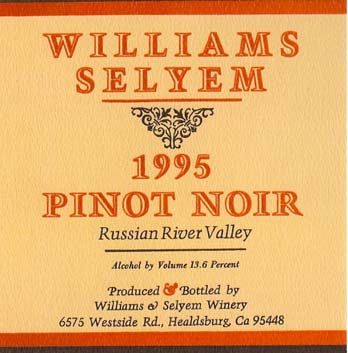 Outstanding in the Field Posts 2012 Schedule 2012 season details are posted and events in California between May and August will go on sale the first day of Spring, March 20, 2012. Pay particular attention to the two dinners at Mark Pasternak’s Devil’s Gulch Ranch in Nicasio, California. Mark farms practically all the Pinot Noir in Marin County as well as raising rabbits, pigs and produce for restaurants. Visit www.outstandinginthefield.com. Endomorphins Make Alcohol Enjoyable Research published in Science Translational Medicine (January 11, 2012) confirmed previous studies in animals that suggested ethanol causes the release of endomorphins from the brain. Endomorphins act like opioids such as morphine. The study measured the displacement of a radio labeled opioid receptor agonist, before and immediately after alcohol consumption in heavy drinkers and control subjects. Drinking alcohol induced opioid release in areas of the brain involved in pleasure and reward (the orbitofrontal cortex and nucleus accumbens). The brains of the heavy drinkers appeared to be changed in such a way as to make them experience more pleasure and reward from alcohol. The results suggest a possible mechanism by which opioid antagonists such as naltrexone work to treat alcohol abuse. Silicon Valley Bank State of Wine Industry 2011-2012 The predicted growth in the fine wine segment is in the range of 11-15% for 2012, albeit with only marginally improving profitability. Boomers and GenX (ages 35-54) will support most of the fine wine recovery. Affluents make up a small percentage of wine consumption by number but have a far greater impact on retail spending. 20% of U.S. households account for 80% of all premium wine sales. The 55 and over crowd is responsible for 44.1% of fine wine purchases, more than double that of Millenials. The most important question wineries can ask is, “Who are your customers and what do they want?” The Finest Wines of California: A Regional Guide to the Best Producers and Their Wines A new book published by University of California Press in 2011 written by UK-based wine writer Stephen Brook. An excellent review of the book by John W. Haeger appears in the Journal of Wine Economics (Vol 6, Number 2, 2011, pp 282-284). The book is part of a series of guides developed by the English magazine, The World of Fine Wine. 110 pages are devoted to illustrations including photographs and label facsimiles. The book leans heavy on Napa wineries with minimal coverage of Pino-centric regions like Mendocino, the Sonoma Coast and the Santa Cruz Mountains. One caveat is that any book touting the best producers is purely a subjective choice by the author. Haeger points out that the book includes a detailed profile of Kistler which is probably reason enough to acquire the book if you have enjoyed Kistler wines through the years since few have been privileged to an insightful look of this winery. Chatter About Wine Critics Tasting Abilities Unrelated to Consumer Preferences There has been considerable cyber chat following the release of a study that surveyed winemakers and critics in Canada and found them as a rule to be genetically hypertasters, that is, very sensitive to propylthiouracil (hypertasters are repulsed by a strong bitter sensation). The researchers suggested that consumers may not be able to appreciate the flavors wine critics describe and may not benefit from drinking highly rated wine. I say hogwash. Hypertasters are sometimes referred to as “supertasters,” a term that should be avoided as it connotes a certain superiority over regular tasters which is not true. Genetically there are three separate types of tasters in the population: hypertasters possess two dominant genes, are hypersensitive to basic tastes, and have more taste buds including fungiform papillae on the tip of their tongue; regular tasters have a moderate response to sensual pleasures and possess one dominate gene and one recessive gene; non-tasters are blind to the intensity of many sweet, sour and salty foods and have two recessive genes. About 25% of the population are hypertasters, 25% are non-tasters, and 50% are regular tasters. More women and Asians are hypertasters. Interestingly, every week taste buds wear out and are replaced, but after the age of 45, they are replaced less frequently, causing more people to gradually become regular or non-tasters. The taste genes determine how many taste bud receptors a person has for sweetness, sourness, saltiness and bitterness. The number of taste buds can vary from a few hundred to tens of thousands. The defining tests to determine the class of taster is either to count the number of papillae on the tongue or record the sensitivity to 6-n-propylthiouracil or PROP (a tablet used to treat hyperthyroidism). Non-tasters will taste nothing when the table touches the tip of the tongue, regular tasters will taste a small amount of bitterness, and hypertasters will experience a strong bitter sensation. Hypertasters do not like the strong tastes of many fruits and vegetables and when tasting wine, they would not be expected to like strong tannins and heavy alcohol and would be more sensitive to sweetness. Regular tasters presumably prefer “average” flavors and find sugar more palatable, high alcohol less bitter, and tannins less repulsive. The non-tasters might enjoy sweet wines more and be more forgiving of strong tannins and alcohol. Since 75% of the population are regular tasters or non-tasters, there is a good chance that some wine critics fall into those two categories, but it is highly unlikely that wine critics will come forward and reveal the type of genetic taster they are. Certainly critics who are hypertasters (who probably would prefer the term supertasters because of the implications) might want to announce their “superior” genetic heritage. If critics did reveal their genetic tasting category, consumers could align themselves with a critic in the same category. A significant point regarding wine tasting has been emphasized by writer Steve Heimoff and others. Experience is more important than heredity in tasting wine. One is not born to taste wine. Ann Noble, wine quality expert at University of California at Davis has said, “None of this is relevant for wine tasting. People learn to taste (wine); they are not born that way.” Hypertasters are not better wine tasters, only more sensitive to tannins, alcohol and sweetness. In a 1997 report in Wine Business Monthly it was noted, “Researchers privately have joked that hypertasters might even prefer the industrial winemaking process, with its heavy fining and racking procedures which have long been known for stripping out flavonoids and other chemical compounds that make up the unique taste of wines.” In the end, the wine drinker’s seasoned palate and learned preferences is most relevant. Regardless of genetic predisposition for tasting sensitivity, it is the drinker’s experience, his proclivity, and his love of the grape that dictate his ultimate drinking experience. If he can align himself with a wine critic who shares similar preferences, he can obtain additional benefits. I don’t consider myself a wine critic, for I have an aversion to disparaging wines, and I prefer to be thought of as a wine writer. For what it is worth, I am a regular taster, but a hyperlover of Pinot Noir. Program for International Pinot Noir Celebration Announced The 26th International Pinot Noir Celebration (IPNC) will be held July 27-29, 2012 on the campus of Linfield College in McMinnville, Oregon. Tickets for the full Weekend, Salmon Bake and Sunday Walkabout events are sold on a first come, first serve basis. IPNC keynote speaker will be Kyle MacLachlan, an American movie and television actor who is a dedicated oenophile. The Grand Seminar will feature Allen Meadows and is titled “Travel Abroad in Burgundy,” a tour of the vineyards of Burgundy. Several notable Burgundian vignerons will join in and offer their wines for tasting. A list of featured wineries and featured chefs is available on the website at www.ipnc.org. Sign up for Seasonal Posts on the latest IPNC news and announcements via e-newsletter.
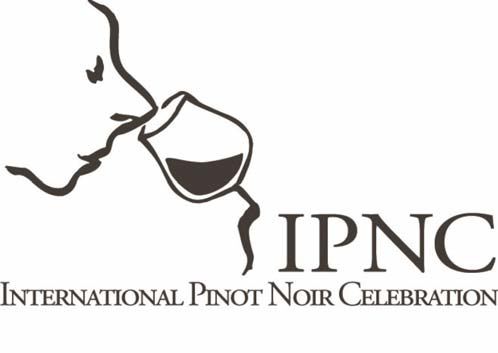
The Bachelor’s Pinot
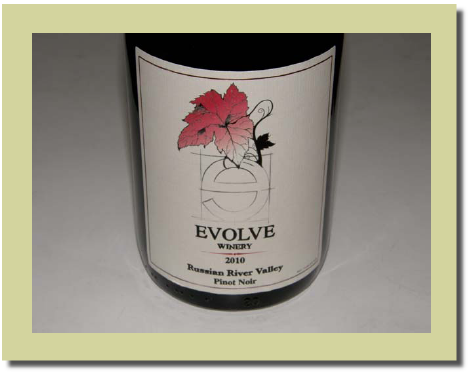 Ben Flajnik is a Sonoma winemaker who suffered through a miserable season of ABC’s ‘The Bachelor.’ After being rejected by Ashley Hebert in last year’s finale of ‘The Bachelorette,’ he was the lead on this year’s program and found himself allured by the model Courtney Robertson, who seemed to be “in it to win it” at all costs. After the show’s airing, Flajnik appeared stressed and his engagement to Robertson on the ropes. Not surprising since Robertson, who appears to have high aspirations for herself, seems unsuited for a life in Sonoma wine country. I am sure Flajnik can’t wait to leave the limelight and return to Sonoma where he was born and raised. He launched Evolve Winery in 2008 with a boyhood friend, Mike Benziger of Glen Ellen’s Benziger Family Winery. Another childhood friend, Danny Fay, finished his wine MBA in Bordeaux and joined the winery as a partner in July 2011. The winery’s name was recently change to Envolve. A second brand, Epilogue, was started to offer a line of low price point wines. The partners are engaged in natural farming with the aim of achieving organic and biodynamic goals. I am not a fan of ‘The Bachelor’ show, but had some interest because Flajnik’s winery crafted a Russian River Valley Pinot Noir from Lennox Vineyard, and I was curious to sample it. The wine turned out to be quite good. I also sampled the 2010 Envolve Carneros Chardonnay which is solid and the 2010 Epilogue North Coast Chardonnay which is a good value.
2010 Evolve Winery Russian River Valley Pinot Noir 14.4% alc., pH 3.66, TA 0.58, 218 cases, $29.99. From a 9-acre vineyard on the southern edge of the Russian River Valley. Dijon clones 115, 667 and 777. · Moderately dark reddish-purple color in the glass. Nicely perfumed with aromas of dark cherries and berries and Herbs de Province. Middleweight core of savory, dark red cherries and berries with a citrus imbued cranberry note on the bright finish. The wine has a herbal vein running through, avoiding the lush fruit-driven character of many Russian River Valley Pinot Noirs. Pleasingly viscous on the palate with a moderate tannic backbone. Considerably better the following day from a previously opened and re-corked bottle with improved fruit to savory balance. Very good.
|